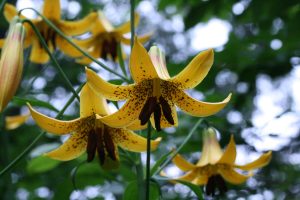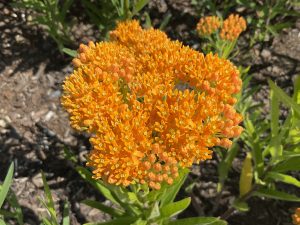Conservation
The Future of Plant Conservation in Maine: A Comprehensive Conservation Assessment for Plant Species

Coastal Maine Botanical Gardens and the Maine Natural Areas Program will conduct the first comprehensive conservation and threat assessment for all plant species in Maine’s native flora to prioritize conservation and research. Increasing threats from a rapidly changing climate, development pressures, sea level rise, and other factors create new urgency to prioritize all native plant species to inform conservation decisions and potential threat responses. Our team will assess the status of all of Maine’s native plant species and assign conservation rarity ranks using methodology developed by NatureServe. The results will focus conservation efforts and inform Maine’s Climate Action Plan Strategy E: “Protect Maine’s Environment and Working Lands and Waters.” We gratefully acknowledge supported from the Maine Outdoor Heritage Fund.
Milkweeds (Asclepias) of the Northeastern United States Collection
 The Gardens is working to develop a conservation collection of native milkweeds of the Northeast. The milkweeds are a priority for our conservation efforts because of the genus’ exceptionally high ecological function, particularly in light of their host relationships with insects, most notably the endangered Monarch butterfly. Asclepias are also known to support bees, wasps, and butterflies through floral interactions plus an additional five orders or suborders of insects through herbivory; several insect species are specialists that only feed on milkweeds. Several species of milkweed are vulnerable due to factors such as rarity, habitat specificity, habitat loss to development, the introduction of invasive species, hybridization between taxa, succession, and inbreeding depression in shrinking populations.
The Gardens is working to develop a conservation collection of native milkweeds of the Northeast. The milkweeds are a priority for our conservation efforts because of the genus’ exceptionally high ecological function, particularly in light of their host relationships with insects, most notably the endangered Monarch butterfly. Asclepias are also known to support bees, wasps, and butterflies through floral interactions plus an additional five orders or suborders of insects through herbivory; several insect species are specialists that only feed on milkweeds. Several species of milkweed are vulnerable due to factors such as rarity, habitat specificity, habitat loss to development, the introduction of invasive species, hybridization between taxa, succession, and inbreeding depression in shrinking populations.
Our collection development plan was recently completed to inform decision making and progress toward our goals for conservation of the ten species of Asclepias in our local ecoregions, guide development of a Nationally Accredited living collection to conserve and showcase the beauty and diversity of the genus, and define steps to educate and inform the public about the ecological importance of milkweeds in our region. The collection will include adult specimens in the living collections as well as seed collections in our conservation seed bank.
Coastal Maine Botanical Gardens Seed Bank: Conserving Genetic Diversity of Peripheral Populations of Vulnerable Species
The Garden’s new seed bank complements seed banks of regional and national partners. In addition to conserving genetic diversity in wild-collected seed of milkweeds as part of our Milkweeds (Asclepias) of the Northeastern United States Conservation Collection, we focus our seed banking efforts on edge-of-range (peripheral) populations because they are particularly important for long-term conservation of species, being typically genetically divergent from central populations, and seeds of plants of climate-imperiled habitats.
Conservation Partnerships
The Gardens is a member of Botanic Garden Conservation International, Center for Plant Conservation, the New England Plant Conservation Program, Maine Botanical Advisory Group, and Ash Protection Collaboration Across Wabanakik.